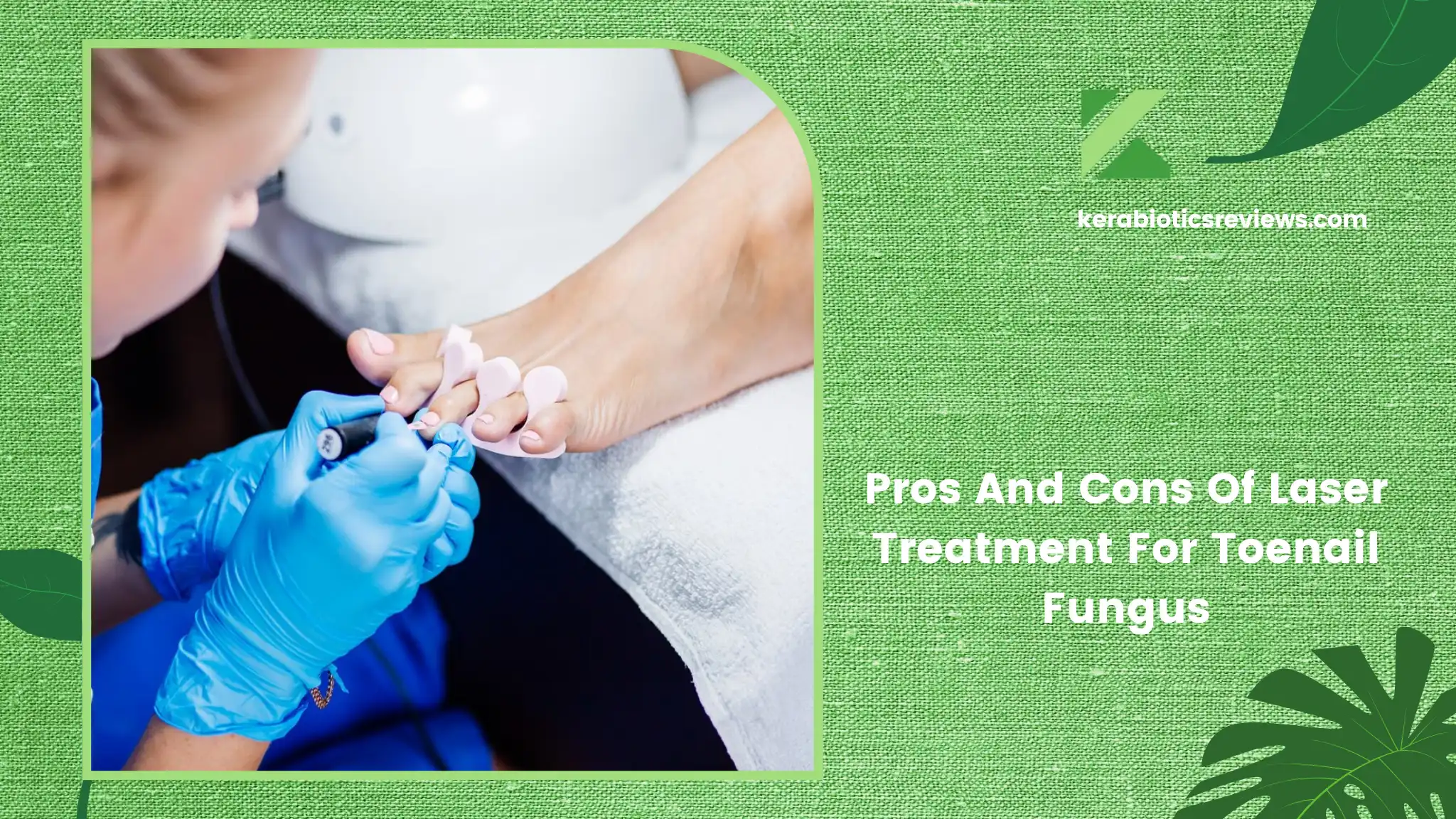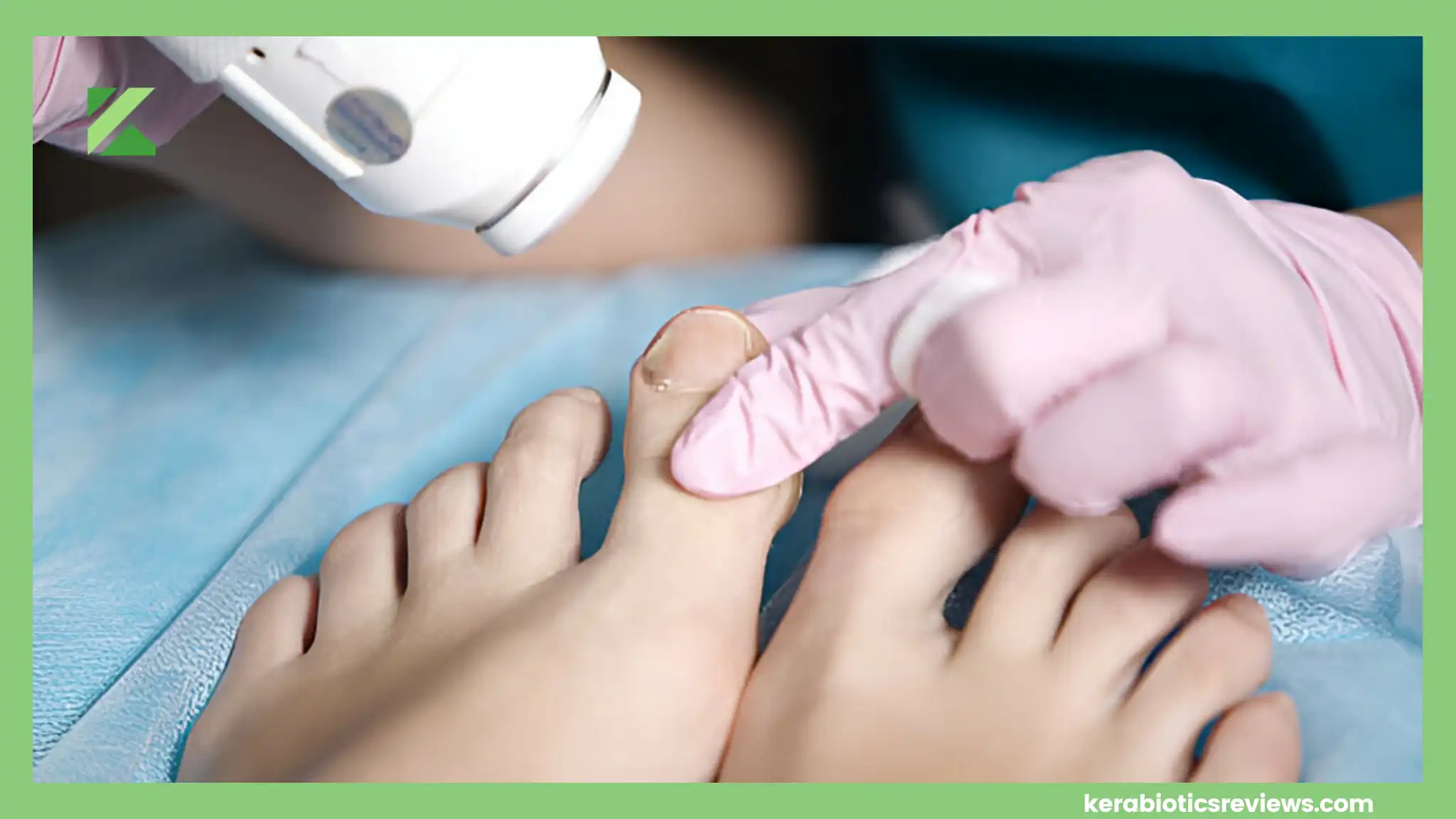The Pros And Cons Of Laser Treatment For Toenail Fungus Removal: A Closer Look
Dive into the advantages and drawbacks of using laser therapy for eliminating toenail fungus. Learn about its effectiveness, potential side effects, and suitability for your needs.

Disclaimer: This article has been generated with the assistance of AI tools. While our research team has fact-checked the content, readers should independently verify information for accuracy and reliability.
Toenail fungus, also known as onychomycosis, is a common and persistent condition that affects millions of individuals worldwide. While traditional treatment options, such as oral antifungal medications and topical solutions, have been used for years, the emergence of laser therapy has introduced a new and promising approach to addressing this stubborn problem.
In this article, we will explore the pros and cons of laser treatment for toenail fungus removal, helping you make an informed decision about the best course of action for your individual needs.
Laser Treatment for Toenail Fungus: Is It Safe?

Laser treatment for toenail fungus removal has been approved by the Food and Drug Administration (FDA) as a safe and effective option for addressing this condition (FDA, 2016). The procedure involves the use of focused light energy to target and destroy the fungal organisms within the toenail, without causing significant damage to the surrounding healthy tissue.
Benefits Of Laser Toenail Fungus Removal
Here are the key benefits of laser toenail fungus removal in a point-wise format:
- Effective Treatment: Laser therapy is highly effective in eliminating toenail fungus, with success rates ranging from 70% to 90%.
- Non-Invasive: Unlike oral medications or topical treatments, laser therapy is non-invasive and does not involve any cutting or drilling into the nail.
- Precise Targeting: The laser can precisely target the infected area of the nail, leaving surrounding healthy tissue unaffected.
- Minimal Discomfort: The procedure is generally well-tolerated, with minimal discomfort or pain during and after treatment.
- No Downtime: Patients can resume their normal activities immediately after the laser treatment, as there is no recovery period required.
- Safe for Most Patients: Laser therapy is considered safe for most individuals, including those with compromised immune systems or those who cannot take oral antifungal medications.
- Improved Appearance: As the fungal infection clears, the nail becomes clearer and healthier in appearance, improving overall foot aesthetics.
- Long-Lasting Results: With proper follow-up care, the results of laser toenail fungus removal can be long-lasting, preventing recurrence.
- Increased Confidence: Eliminating unsightly and potentially painful toenail fungus can boost self-confidence and improve overall quality of life.
- Cost-Effective: While the initial cost may be higher than some other treatments, laser therapy can be cost-effective in the long run due to its high success rate and potential for long-lasting results.
How Laser Treatments Work For Toenail Fungus?
Laser treatment for toenail fungus works by using a concentrated beam of light to heat and destroy the fungal organisms within the nail. The laser energy penetrates the nail and targets the fungus, without causing significant damage to the surrounding healthy tissue (USF Health, n.d.). This process is typically completed in a single, relatively painless treatment session.
Read More: The Most Common Types Of Nail Infections: Causes, Symptoms, And Treatments
Pros Of Laser Toenail Fungus Removal
In addition to the high success rate and improved comfort, some of the key advantages of laser treatment for toenail fungus include:
- Faster treatment time: Laser treatments are typically completed in a single, 30-minute session, compared to the weeks or months required for oral or topical antifungal therapies (Westerberg & Voyack, 2019).
- Minimal side effects: Laser treatment is generally well-tolerated, with only mild discomfort or temporary nail discoloration reported in some cases (Weber et al., 2018).
- Improved appearance: As the fungal infection clears, the toenail will begin to grow out with a more natural, healthy appearance (Gupta & Stec, 2019).
Cons Of Laser Toenail Fungus Removal
While laser treatment for toenail fungus offers many benefits, there are also some potential drawbacks to consider:
- Cost: Laser treatment for toenail fungus can be more expensive than traditional antifungal medications, with costs ranging from $1,000 to $3,000 per treatment (Westerberg & Voyack, 2019).
- Recurrence risk: In some cases, the fungal infection may return even after successful laser treatment, requiring additional procedures or long-term management (Ma et al., 2019).
- Insurance coverage: Not all insurance providers cover the cost of laser treatment for toenail fungus, so patients may need to pay out-of-pocket (Westerberg & Voyack, 2019).
Read More: Top 10 Nail Fungus Symptoms To Watch Out For
Is Laser Toenail Fungus Removal A Worthy Investment?
Ultimately, the decision to pursue laser treatment for toenail fungus removal will depend on individual factors, such as the severity of the infection, personal preferences, and financial considerations. For many patients, the potential benefits of faster treatment, improved comfort, and better aesthetic outcomes may outweigh the higher cost and possible recurrence risk.
It is important to consult with a qualified podiatrist or dermatologist to thoroughly evaluate your condition and discuss the best treatment options, including the potential risks and benefits of laser therapy. They can guide the most appropriate course of action to address your toenail fungus effectively and improve your overall foot health. Try Kerabiotics to treat nail infections naturally.
Read More: How To Know If Toenail Fungus Is Dying: Signs Of Progress To Look For
Final Thoughts
Laser treatment for toenail fungus removal has emerged as a promising alternative to traditional treatment methods. While it offers several advantages, such as a higher success rate, faster treatment time, and minimal side effects, it is also important to consider the potential drawbacks, including the higher cost and the risk of recurrence.
By weighing the pros and cons and working closely with a healthcare professional, individuals can make an informed decision about whether laser treatment is the right choice for addressing their toenail fungus concerns.
Luna Rey
Dr. Luna Rey is a renowned dermatologist renowned for her expertise in diagnosing and treating a vast array of skin conditions. From common ailments such as acne and eczema to complex diseases like psoriasis and skin cancer, her proficiency spans the entire spectrum. Beyond her clinical practice, Dr. Rey’s passion for writing has led her to contribute extensively to leading medical journals. Her articles on dermatology topics are widely acclaimed for their clarity, concision, and accessibility. With a writing style that seamlessly blends scientific rigor with lucid explanations, she has garnered a broad readership, making her work a valuable resource for both professionals and the general public alike.
